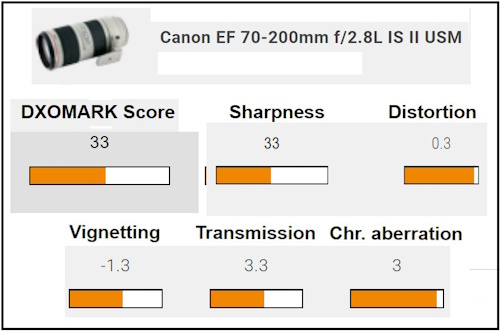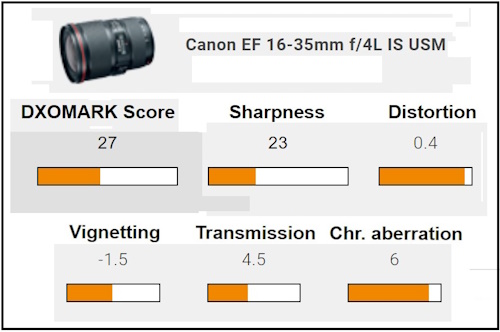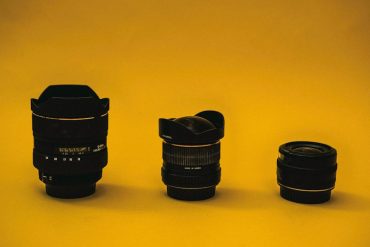Welcome to the world of photography! As an interested photographer, you might be wondering about the best zoom lens for your Canon camera. Choosing the right zoom lens is crucial for capturing stunning images, whether you’re using a DSLR or a mirrorless camera.
In this blog post, we will discuss what is a zoom lens, and the differences between zoom and prim lens, then we’ll explore the importance of selecting the perfect zoom lens and provide an overview of Canon’s zoom lens offerings.
What is a zoom lens?
A zoom lens is a type of camera lens that allows the user to adjust the focal length and thus the angle of view of the lens.
This means that the user can zoom in or out on a subject without physically moving closer or further away. Zoom lenses have a variable focal length, which means that they can cover a range of focal lengths, such as 18-55mm or 70-200mm.
This makes them a versatile option for photographers who need to quickly adjust their framing without changing lenses. However, zoom lenses are generally larger and heavier than prime lenses, and can suffer from distortion and softness at extreme focal lengths.
Differences between prime and zoom lenses
Prime lenses are known for their superior image quality and wide maximum aperture, while zoom lenses offer more versatility and convenience with their variable focal lengths. However, zoom lenses can suffer from distortion and softness at extreme focal lengths, and are generally larger and heavier than prime lenses. Prime lenses are also typically less expensive than zoom lenses due to their simpler design. The below table summarizes the differences between prim and zoom lenses:
| Feature | Prime Lenses | Zoom Lenses |
|---|---|---|
| Focal Length | Fixed | Variable |
| Aperture | Wide maximum aperture | Smaller maximum aperture |
| Image Quality | Generally sharper and better image quality | Can suffer from distortion and softness at extreme focal lengths |
| Size and Weight | Smaller and lighter | Larger and heavier |
| Versatility | Limited to one focal length | Can cover a range of focal lengths |
| Price | Generally less expensive | Can be more expensive due to added complexity |
Overview of Canon’s zoom lens offerings
Canon is a renowned brand in the photography world, offering a variety of zoom lenses for both DSLRs and mirrorless cameras. To help you make an informed decision, let’s take a look at the different types of zoom lenses available for Canon cameras:
1. Standard zoom lenses:
These lenses cover a moderate range of focal lengths, typically from wide-angle to short telephoto. These lenses typically cover a focal length range of around 24-70mm or 18-55mm, depending on the camera sensor size (full-frame or APS-C). They are versatile and suitable for everyday photography, making them a popular choice for beginners and professionals alike.
2. Telephoto zoom lenses:
If you’re interested in capturing distant subjects, such as wildlife or sports events, a telephoto zoom lens is your best bet. These lenses have a longer focal length, allowing you to get up close and personal with your subject without physically moving closer.
These lenses usually have a focal length range starting from around 70mm and can extend up to 200mm, 300mm, or even beyond 400mm.
3. Wide-angle zoom lenses:
For those who love capturing sweeping landscapes or architectural shots, wide-angle zoom lenses are a must-have. They offer a broader field of view, enabling you to fit more of the scene into your frame.
These lenses generally cover a focal length range from around 10mm to 24mm for APS-C sensor cameras, and 16mm to 35mm for full-frame cameras.
Now that you have a basic understanding of the different types of zoom lenses available for Canon cameras, it’s time to dive deeper into the world of photography. In the following sections, we’ll discuss in more details the Factors to consider when choosing a zoom lens
Stay tuned as we explore the best Canon zoom lenses for DSLR and mirrorless cameras in the upcoming sections. Happy shooting!
Factors to consider when choosing a zoom lens
When selecting the perfect zoom lens for your Canon DSLR or mirrorless camera, there are several factors to consider. In this section, we’ll discuss four key aspects to keep in mind:
-
The lens mounting type
For Canon DSLR cameras, the Canon lens mounting system uses the EF mount. This mount has been around since 1987 and is compatible with all Canon DSLR cameras. It’s a sturdy mount that can handle heavy lenses and provides a secure connection between the lens and the camera body.
For mirrorless cameras, Canon uses the RF mount. This mount was introduced in 2018 and is designed specifically for mirrorless cameras. It’s smaller than the EF mount, which allows for smaller and lighter lenses. The RF mount also has a shorter flange distance, which means that lenses can be designed to be closer to the sensor, resulting in better image quality.
One of the great things about the Canon lens mounting system is that it’s backward compatible. This means that you can use older EF lenses on newer RF mount cameras with an adapter. Canon offers a range of adapters that allow you to use EF lenses on RF mount cameras without losing any functionality.
-
Focal length:
The focal length of a zoom lens determines the range of subjects you can capture. Consider your photography interests and choose a lens with a suitable focal length range. Here’s a quick guide:
- Standard zoom lenses (24-70mm for full frame) are great for Everyday photography, landscapes, portraits, street photography
- Telephoto zoom lenses (70-200mm, 70-300mm, or beyond) are ideal for Distant subjects, wildlife, sports events, portraits with shallow depth of field
- Wide-angle zoom lenses (16-35mm for full-frame) are perfect for expansive landscapes, architecture, and interior spaces
-
Aperture:
The aperture of a lens affects the amount of light it can capture and the depth of field in your images. A lens with a larger maximum aperture (lower f-number) allows more light in, which is helpful in low-light situations. It also creates a shallower depth of field, giving you that beautiful background blur in portraits. Keep in mind that lenses with larger apertures are often more expensive.
-
Image stabilization:
Image stabilization helps reduce camera shake, resulting in sharper images, especially when shooting handheld at slower shutter speeds. Many Canon Zoom lenses feature built-in image stabilization, which can be particularly useful for telephoto lenses or low-light photography. Look for lenses with “IS” (Image Stabilizer) in their name.
-
Autofocus:
A fast and accurate autofocus system is essential for capturing sharp images, especially when photographing moving subjects. Canon offers lenses with various autofocus technologies, such as USM (Ultrasonic Motor) and STM (Stepping Motor). USM lenses typically provide faster and quieter autofocus, while STM lenses offer smoother and near-silent focus transitions, which can be beneficial for video recording.
-
Read reviews and consider the DOX score
In order to make a well-informed decision about choosing a specific lens, it is essential to not only read user reviews but also take into account the quality evaluation scores provided by reputable laboratories like DOXMark.
The Lens Score is a comprehensive evaluation metric developed by DOX to assess the quality and performance of various lenses. This score is based on a range of parameters that are crucial in determining the overall performance of a lens. Some of the key parameters considered by DOX in their evaluation process include:
- Sharpness: This parameter measures the ability of a lens to render fine details accurately. A higher sharpness score indicates better image clarity and resolution.
- Distortion: This parameter evaluates the extent to which a lens introduces geometric distortion, such as a barrel or pincushion distortion, in the captured images. A lower distortion score signifies better image accuracy and minimal distortion.
- Chromatic Aberration: This parameter assesses the degree to which a lens causes color fringing or dispersion of light at the edges of objects in an image. A lower chromatic aberration score indicates better color accuracy and reduced fringing.
- Vignetting: This parameter measures the amount of light falloff towards the corners of an image. A lower vignetting score signifies more even illumination across the entire image frame.
By considering these parameters, DOX assigns a Lens Score to each lens, providing a comprehensive evaluation of its overall performance and quality. This score can be a valuable tool for photographers and videographers when comparing and selecting lenses for their specific needs.
Best Canon Zoom Lenses for DSLR Cameras
1. Canon EF 24-70mm f/2.8L II USM
Key Features
- EF-Mount Lens/Full-Frame Format
- Aperture Range: f/2.8 to f/22
- One Super UD Element, Two UD Elements
- Three Aspherical Elements
- Super Spectra and Fluorine Coatings
- Ring-Type Ultrasonic Motor AF System
- Weather-Sealed Construction
If you’re looking for more information, check my review Here
Overview:
The Canon EF 24-70mm f/2.8L II USM is a standard zoom lens that covers a focal length range of 24-70mm, and it is part of Canon’s L-series, which is known for its high-quality optics and build quality. It’s compatible with both full-frame and APS-C sensor Canon DSLR cameras.
The lens features a maximum aperture of f/2.8, which remains constant throughout the zoom range. This means you can achieve a shallow depth of field and excellent low-light performance, even at the telephoto end of the zoom range.
The Canon EF 24-70mm f/2.8L II USM has several features that make it a top-performing zoom lens. Here are some of its key features:
- Ultrasonic Motor (USM): The lens features a fast and quiet autofocus system, thanks to its USM technology. This makes it ideal for capturing fast-moving subjects, such as sports events or wildlife.
- Super Spectra Coating: The lens has a Super Spectra Coating that helps reduce ghosting and flare, resulting in sharper and more vibrant images.
- Weather-Sealed Construction: The lens has a weather-sealed construction that makes it resistant to dust and moisture. This makes it ideal for outdoor photography, even in challenging weather conditions.
- Circular Aperture: The lens has a circular aperture that creates a pleasing bokeh effect in the out-of-focus areas of your images.
Ideal Use Cases:
The Canon EF 24-70mm f/2.8L II USM is an ideal lens for several photography genres, including:
- Weddings and Events: The lens’s versatile focal length range and fast autofocus system make it ideal for capturing candid moments and portraits at weddings and events.
- Travel Photography: The lens’s weather-sealed construction and versatile focal length range make it an excellent choice for travel photography.
- Street Photography: The lens’s focal length range and fast autofocus system make it ideal for capturing street scenes and candid portraits.
Pros:
- Excellent image quality
- Fast and quiet autofocus system
- Weather-sealed construction
- Versatile focal length range
- Constant f/2.8 aperture
Cons:
- Heavy and bulky
- Expensive
- No image stabilization
DOX score
The following is the DXO score:

Third-party alternatives
If you’re looking for third-party alternatives to the Canon EF 24-70mm f/2.8L II USM, you might consider the Tamron SP 24-70mm f/2.8 Di VC USD G2 or the Sigma 24-70mm f/2.8 DG OS HSM Art. Both of these lenses offer excellent image quality and a fast maximum aperture, making them ideal for a wide range of photography applications.
2. Canon EF 70-200mm f/2.8L IS III USM
Key Features
- EF-Mount Lens/Full-Frame Format
- Aperture Range: f/2.8 to f/32
- One Fluorite Element & Five UD Elements
- Air Sphere Coating
- Ring-Type Ultrasonic Motor AF System
- Optical Image Stabilizer
- Internal Focus, Focus Range Limiter
- Weather-Sealed Design, Fluorine Coating
- Detachable, Rotatable Tripod Collar
- Rounded 8-Blade Diaphragm
Overview:
The Canon EF 70-200mm f/2.8L IS III USM is a highly versatile lens that is ideal for a wide range of subjects, from portraiture to sports. This L-series telephoto zoom lens is known for its bright design and advanced optics, which make it a top choice for photographers who need to shoot in difficult lighting conditions.
The lens features a fast constant f/2.8 maximum aperture that provides increased control over depth of field, allowing you to isolate your subjects and create stunning bokeh effects.
The optical layout of the lens is designed to deliver exceptional image quality, with one fluorite element and five UD elements that work together to suppress chromatic aberrations and color fringing.
This results in a high degree of clarity throughout the zoom range. Additionally, the lens features an Air Sphere Coating that reduces flare and ghosting, resulting in greater color fidelity and contrast in all conditions.
To further enhance its performance, the Canon EF 70-200mm f/2.8L IS III USM also features an Optical Image Stabilizer that compensates for 3.5 stops of camera shake.
This makes it easier to work handheld and in low-light situations, resulting in sharper images. The lens also has a ring-type USM and internal focusing mechanism that provide quick, quiet, and accurate autofocus performance, as well as full-time manual focus override.
Furthermore, the lens is weather-sealed, making it suitable for use in challenging environmental conditions.
Ideal use cases:
The Canon EF 70-200mm f/2.8L IS III USM is a versatile lens that can be used for a wide range of photography applications. It is ideal for shooting sports, wildlife, and other fast-moving subjects, as well as portraits, landscapes, and other types of photography.
Pros:
- Fast f/2.8 maximum aperture
- Image Stabilization technology
- High-quality construction
- USM for fast and quiet autofocus
- Versatile focal length range
Cons:
- Expensive
- Heavy and bulky
DOX score

Third-party alternatives
If you’re looking for a telephoto zoom lens, the Tamron SP 70-200mm f/2.8 Di VC USD G2 or the Sigma 70-200mm f/2.8 DG OS HSM Sports are both great options. These lenses offer exceptional image quality, fast autofocus performance, and image stabilization technology to help reduce camera shake.
3. Canon EF 16-35mm f/4L IS USM
Key Features
- EF-Mount Lens/Full-Frame Format
- Aperture Range: f/4 to f/22
- Two Ultra-Low Dispersion Elements
- Three Aspherical Elements
- Super Spectra and Fluorine Coatings
- Ring-Type Ultrasonic Motor AF System
- Optical Image Stabilizer
- Weather-Sealed Construction
- Rounded 9-Blade Diaphragm
Overview
The Canon EF 16-35mm f/4L IS USM is a part of the Canon L-series lens family, which is known for its exceptional quality. This lens stands out due to its constant f/4 maximum aperture, advanced optical design, and use of image stabilization technology to produce sharp and clear images.
The lens features two ultra-low dispersion elements that work together to minimize color fringing and chromatic aberrations, resulting in high clarity and color accuracy. Additionally, a Super Spectra coating has been applied to reduce flare and ghosting, which improves contrast.
The lens also has three aspherical elements that help to control distortion and minimize spherical aberrations, resulting in improved sharpness.
In addition to its impressive imaging capabilities, this wide-angle zoom lens also features a four-stop-effective Image Stabilizer system that minimizes camera shake, resulting in sharper handheld shots.
The lens also has a ring-type USM and internal focusing mechanism that provide quick, quiet, and accurate autofocus performance, as well as full-time manual focus override. Furthermore, the lens is weather-sealed and has a protective fluorine coating on the exposed elements, making it suitable for use in challenging environmental conditions.
Ideal use cases:
The Canon EF 16-35mm f/4L IS USM is a versatile lens that can be used for a wide range of photography applications. It is ideal for shooting landscapes, architecture, and other wide-angle subjects, as well as portraits and other types of photography.
Pros:
- Fast f/4 maximum aperture
- Image Stabilization technology
- High-quality construction
- USM for fast and quiet autofocus
- Versatile focal length range
Cons:
- Expensive
- Heavy and bulky
DOX score

Third-party alternatives
For a wide-angle zoom lens, the Tamron SP 15-30mm f/2.8 Di VC USD G2 or the Sigma 14-24mm f/2.8 DGSM Art are both excellent choices. These lenses offer a fast maximum aperture, advanced optics, and weather-sealed construction, making them ideal for landscape, architecture, and other wide-angle photography applications.

Photo by Kalen Emsley on Unsplash
Best Canon Zoom Lenses for Mirrorless Cameras
1. Canon RF 24-105mm f/4L IS USM
Key Features
- RF-Mount Lens/Full-Frame Format
- Aperture Range: f/4 to f/22
- Super Spectra Coating
- Nano USM AF System
- Optical Image Stabilizer
- Customizable Control Ring
- Rounded 9-Blade Diaphragm
Overview
The Canon RF 24-105mm f/4 L IS USM lens is a versatile zoom lens that can be used in a wide range of shooting scenarios.
It has a constant f/4 maximum aperture and a five-stop-effective Image Stabilizer that helps to minimize camera shake for sharper handheld shots.
The lens also features a customizable Control Ring that can be configured to adjust various exposure settings, such as aperture, ISO, and exposure compensation.
The advanced optical design includes a Super Spectra Coating that helps to reduce ghosting and flare, resulting in improved contrast and color accuracy when shooting in bright and backlit conditions.
The lens is suitable for both photo and video applications and has a Nano USM autofocus motor that provides fast, quiet, and precise focusing performance.
Ideal Use Cases:
The Canon RF 24-105mm f/4 IS USM is an ideal lens for several photography genres, including:
- Travel Photography: The lens’s versatile focal length range and image stabilization make it an excellent choice for travel photography.
- Portraits: The lens’s focal length range and image stabilization make it ideal for capturing portraits with a shallow depth of field.
- Events: The lens’s versatile focal length range and image stabilization make it ideal for capturing candid moments and portraits at events.
Pros:
- Excellent image quality
- Image stabilization
- Weather-sealed construction
- Versatile focal length range
Cons:
- Maximum aperture of f/4
- Heavy and bulky
- Expensive
DOX score


Photo by mirrorless comparison

Photo by Max Hummel
2. Canon RF 70-200mm f/2.8L IS USM
Key Features
- RF-Mount Lens/Full-Frame Format
- Aperture Range: f/2.8 to f/32
- One Super UD Element, One UD Element
- Two Aspherical Elements
- Air Sphere and Fluorine Coatings
- Dual Nano USM AF System
- Optical Image Stabilizer
- Customizable Control Ring
- Detachable, Rotatable Tripod Collar
- Rounded 9-Blade Diaphragm
Overview
The Canon RF 70-200mm f/2.8L IS USM is a remarkable zoom lens that is designed to complement the EOS R System. It offers a long telephoto zoom length that allows you to get closer to faraway subjects, making it an ideal choice for portrait, wedding, wildlife, and sports photographers.
One of the most impressive features of this lens is its compact and portable design. It is Canon’s lightest and shortest 70-200mm f/2.8 lens, making it easy to carry with you wherever you go.
Additionally, it has a dust- and weather-resistant construction, which means you can use it in various weather conditions without worrying about damaging the lens.
The lens’s large f/2.8 maximum aperture is another standout feature. It allows you to capture sharp, bright images and videos, even in low-light settings.
This makes it an excellent choice for photographers who frequently shoot in challenging lighting conditions.
Canon’s Nano USM technology is also incorporated into this lens, providing fast and virtually silent autofocus. This feature is particularly useful for capturing fast-moving subjects, such as sports events or wildlife.
Additionally, the lens features up to 5 stops of shake correction, which helps to reduce camera shake and produce sharper images.
Ideal Use Cases:
The Canon RF 70-200mm f/2.8L IS USM is an ideal lens for several photography genres, including:
- Sports and Wildlife: The lens’s fast autofocus system and image stabilization make it ideal for capturing fast-moving subjects, such as sports events or wildlife.
- Portraits: The lens’s focal length range and wide maximum aperture make it ideal for capturing portraits with a shallow depth of field.
- Events: The lens’s versatile focal length range and image stabilization make it ideal for capturing candid moments and portraits at events.
Pros:
- Excellent image quality
- Fast and quiet autofocus system
- Image stabilization
- Weather-sealed construction
- Versatile focal length range
- Constant f/2.8 aperture
Cons:
- Heavy and bulky
- Expensive

 Photo by Gordon Laing
Photo by Gordon Laing
3. Canon RF 15-35mm f/2.8L IS USM
Key Features
- Full-Frame | f/2.8 to f/22
- Fast Wide-Angle Zoom
- Nano USM AF System
- Optical Image Stabilizer
- Aspherical and Low Dispersion Elements
- Air-Sphere and Fluorine Coatings
- Customizable Control Ring
Overview
The Canon RF 15-35mm f/2.8 L IS USM is a versatile zoom lens that boasts a bright f/2.8 constant maximum aperture. This feature allows you to work in low-light conditions and gives you greater control over the depth of field.
The wide focal length range makes it suitable for various photography genres, including landscape and documentary shooting. The lens’s advanced optical design significantly reduces color fringing and distortion, resulting in high clarity and sharpness.
Additionally, an Air-Sphere coating has been applied to reduce flare and ghosting, which improves contrast and color fidelity when working in bright conditions.
The lens’s imaging capabilities are further enhanced by an apt Nano USM focus system, which delivers fast and nearly silent autofocus performance with full-time manual focus override.
An Image Stabilizer compensates for up to five stops of camera shake, producing sharper handheld shots in challenging lighting conditions. The lens also features a unique Control Ring integrated into its design, allowing for intuitive control over exposure settings from the lens itself.
Furthermore, the Canon RF 15-35mm f/2.8 L IS USM is weather-sealed and has a fluorine coating to protect the front and rear elements. This feature makes it durable and resistant to dust and moisture, making it an ideal choice for outdoor photography.
Ideal Use Cases:
- Landscape Photography: The wide focal length range of the Canon RF 15-35mm f/2.8L IS USM makes it an excellent choice for capturing stunning landscape photos. Its bright maximum aperture allows you to shoot in low-light conditions, while its advanced optical design ensures high clarity and sharpness.
- Architecture Photography: The lens’s wide focal length range also makes it an ideal choice for capturing architectural details. Its advanced optical design significantly reduces color fringing and distortion, resulting in high clarity and sharpness.
- Documentary Photography: The lens’s wide focal length range and fast autofocus system make it an excellent choice for capturing candid moments and portraits at events.
Pros:
- Wide Focal Length Range
- Bright Maximum Aperture
- Advanced Optical Design:
- Image Stabilization:
Cons:
- Price: The Canon RF 15-35mm f/2.8L IS USM is a high-end lens, which means it comes with a high price tag.
- Weight: The lens is relatively heavy, which may be a concern for photographers who prefer lightweight gear.

By flickr

Photo by ihitthebutton
Thanks for reading, I hope you enjoyed the article, in case you have any questions just drop them below & I will be happy to answer you.
The featured Image by Bronisław Dróżka from Pixabay
If you enjoy the site, don’t forget to subscribe, we will only inform you when a new article is posted.


















Thank you so much for a well written and informative article. I really had no idea there were so many lenses for zooming in on your picture. I learned what the aperture was thanks to your article. I am not a picture taker myself, but I do appreciate learning more about it. So thank you again for an informative article that taught me something new!!
You’re very welcome! I’m glad to hear that you found the article informative and that you learned something new about photography. It’s always great to hear that my writing has helped someone gain a better understanding of a topic. If you have any further questions or if there’s anything else I can help you with, please don’t hesitate to ask. Thank you for taking the time to read the article and for leaving such a kind comment!
The article “What is the Best Canon Zoom Lens?” on ehabphotography provides a thorough and informative guide for photographers seeking the ideal Canon zoom lens for their photography needs. As a photography enthusiast, I appreciate the detailed analysis and recommendations offered in this article.
I particularly find the lens recommendations and their corresponding features and benefits to be valuable. The article covers a variety of Canon zoom lenses, from the popular general-purpose lenses to specialized lenses for specific genres like wildlife, sports, and portraits. This broad range of recommendations caters to different photographers with varying interests and shooting styles.
“What is the Best Canon Zoom Lens?” provides a comprehensive guide to selecting the right Canon zoom lens. The article’s in-depth analysis, lens recommendations, sample images, and consideration of various shooting scenarios make it a valuable resource for photographers. I would highly recommend this article to anyone looking to invest in a Canon zoom lens and elevate their photography skills.
Thank you for your thoughtful comment! I’m glad to hear that you found the article on the best Canon zoom lenses informative and helpful. As a photography enthusiast myself, I understand the importance of having the right equipment to achieve the desired results. I’m happy to hear that you found the lens recommendations and corresponding features and benefits valuable, and that the article’s broad range of recommendations caters to different photographers with varying interests and shooting styles. If you have any questions or if there’s anything else I can help you with, please don’t hesitate to ask. Thank you for taking the time to leave such a thoughtful comment and for recommending the article to others!